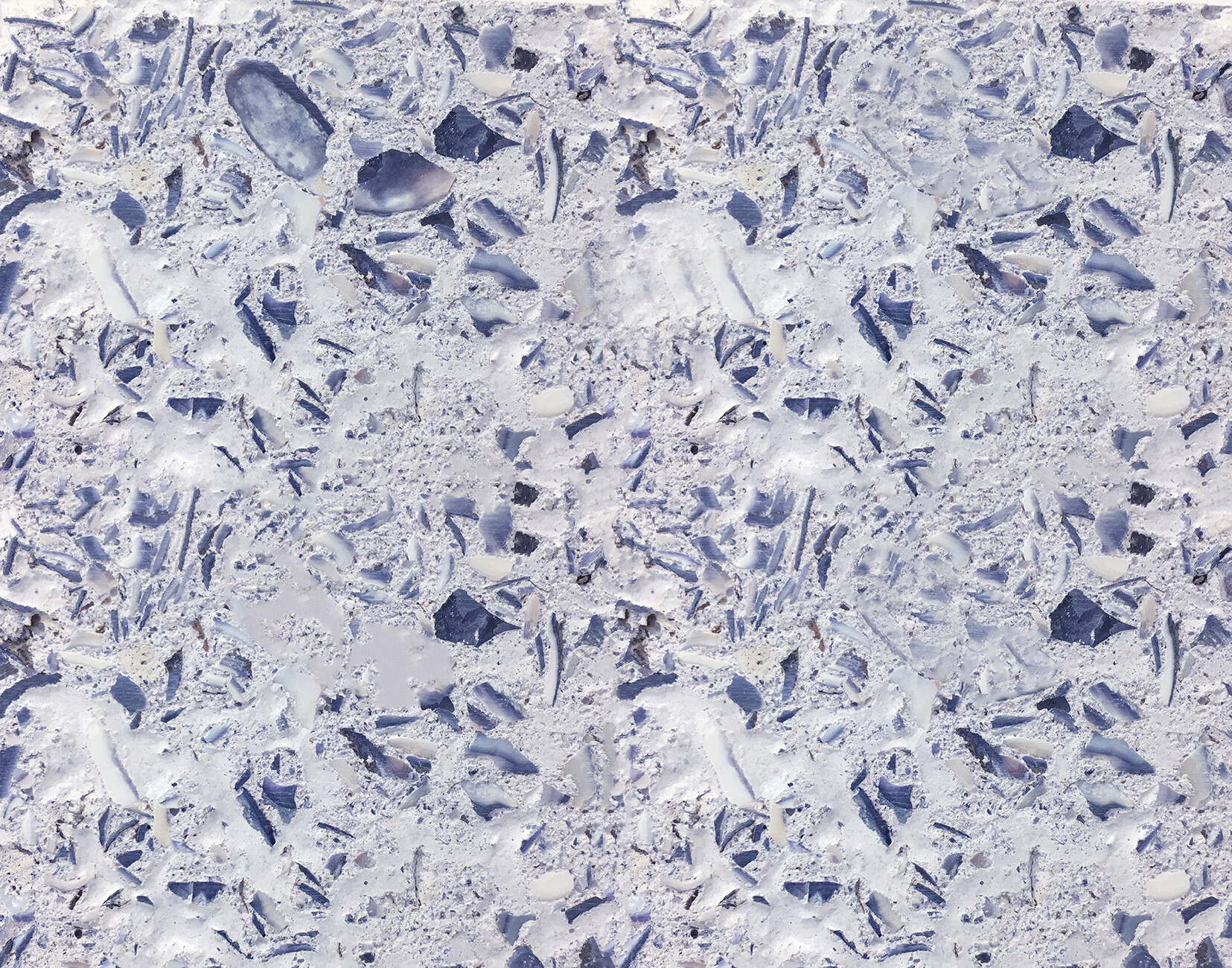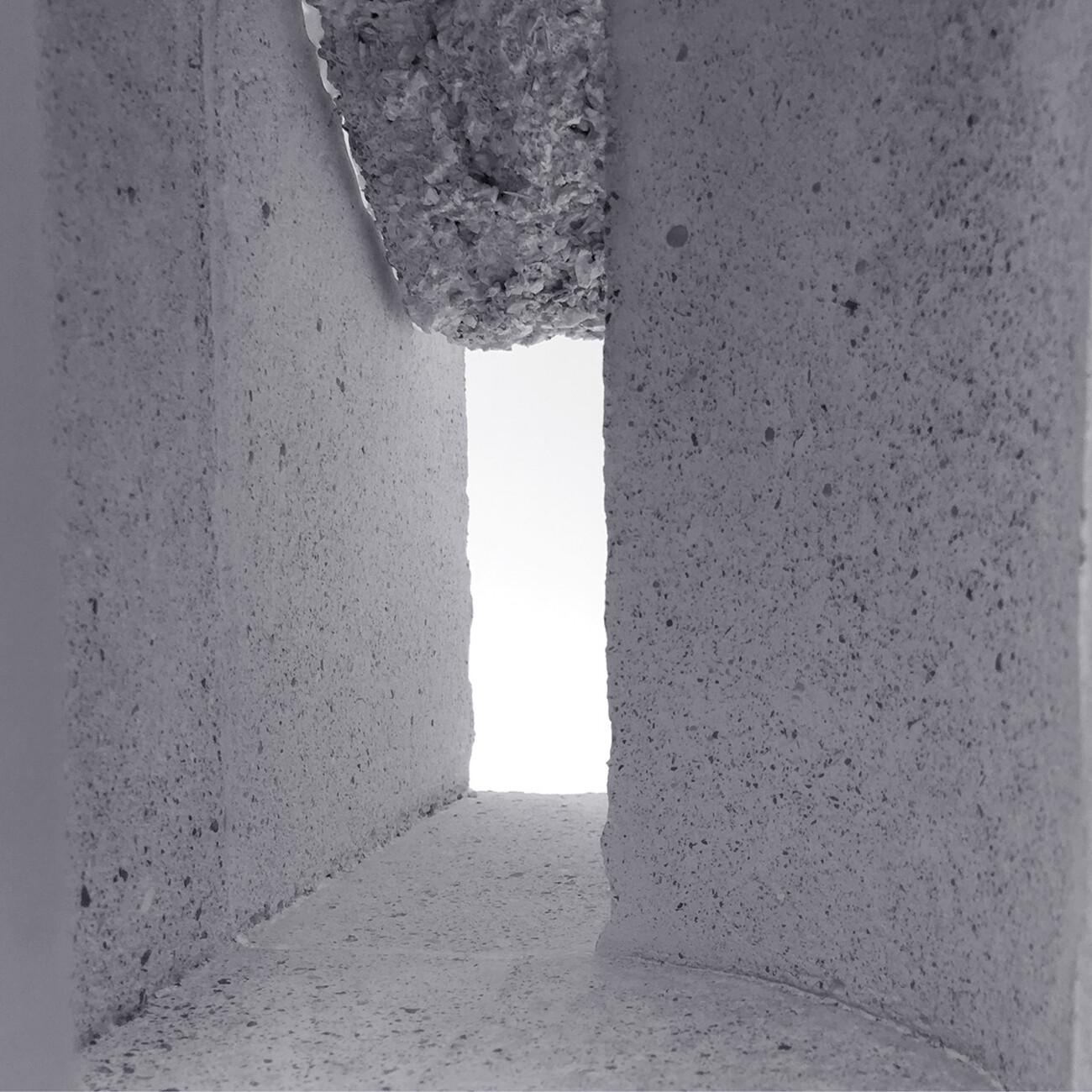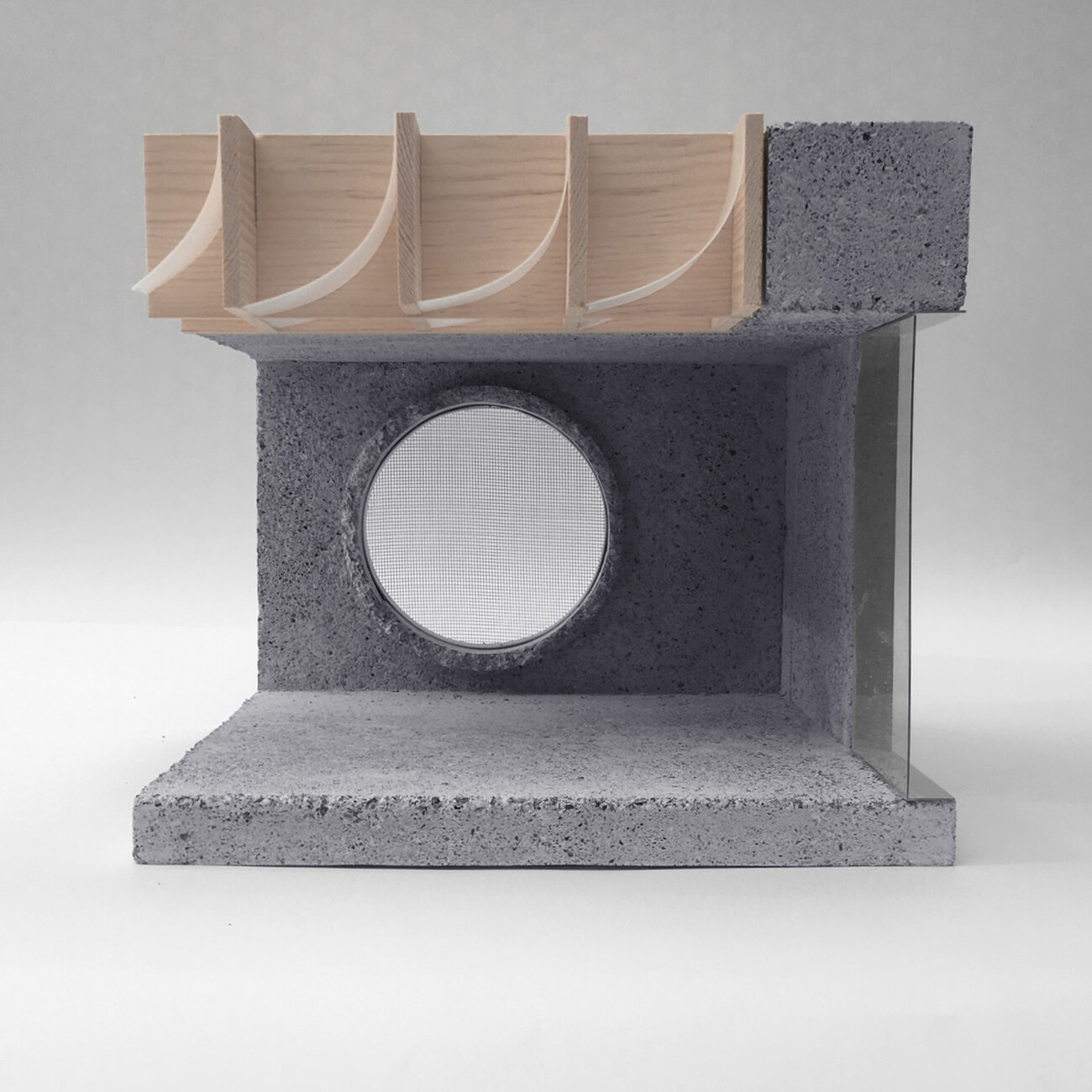SUSTAINABILITY
Three questions to Hellmark_Kjellén
What was your motivation to develop an alternative to classic concrete?
Hellmark_Kjellén: Our initial intention with the master thesis was to utilize a local or regional characteristic in search for a regional nuance. We found a disused shell industry site in Klätta, in northern Bohuslän, where a large number of shells had been piled up as waste material. The shells have an aesthetic that we wanted to incorporate into a building material. Bohuslän has a long history of harvesting the sea and the landscape that surrounds it. From using herring oil to protect buildings to using rocks as foundations. The vernacular architecture has been prominent through the history in the region, where utilizing the nearby setting has been essential. There is a growing industry of farmed mussels in Bohuslän because of the growing demand from restaurants but also as a way of cleaning the waters from pollution. A small restaurant in Ljungskile has over seven tons of shells as waste per season and the biggest company for farmed mussel in Bohuslän, have a growing problem with their waste of shells. When researching the possibilities of using seashells as a material we fell across a paper, that claimed that do to the high Calcium oxide (CaO) content in seashells it gets reactive when heated, thus making it possible as a partial substitute for cement as binder in concrete. We made some trials and ended up not replace the binder but the aggregate in our continued studies. Focusing on the esthetical properties and benefits from the material, making several castings and test as a way of exploring a material expression that derives from the site and its local resources.
What advantages would shell concrete have?
Hellmark_Kjellén: We think that the advantages of shell concrete is mainly that it incorporates a natural material that is otherwise seen as a waste and in the process makes it visible attractive.
What is the current status of your material experiment?
Hellmark_Kjellén: The material experiments haven’t, unfortunately, continued after the master thesis but we hope to continue the work in the future. Not solely with seashells but more as a design philosophy, utilizing materiality and local resources in programming shape and function.

















